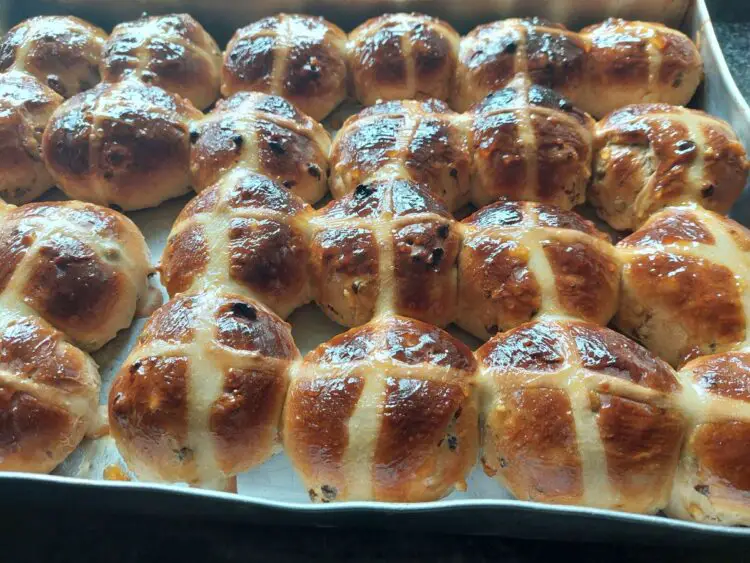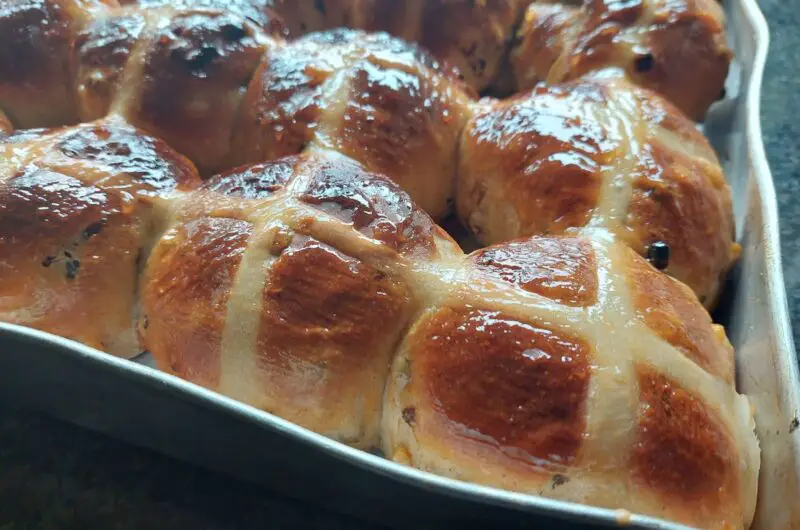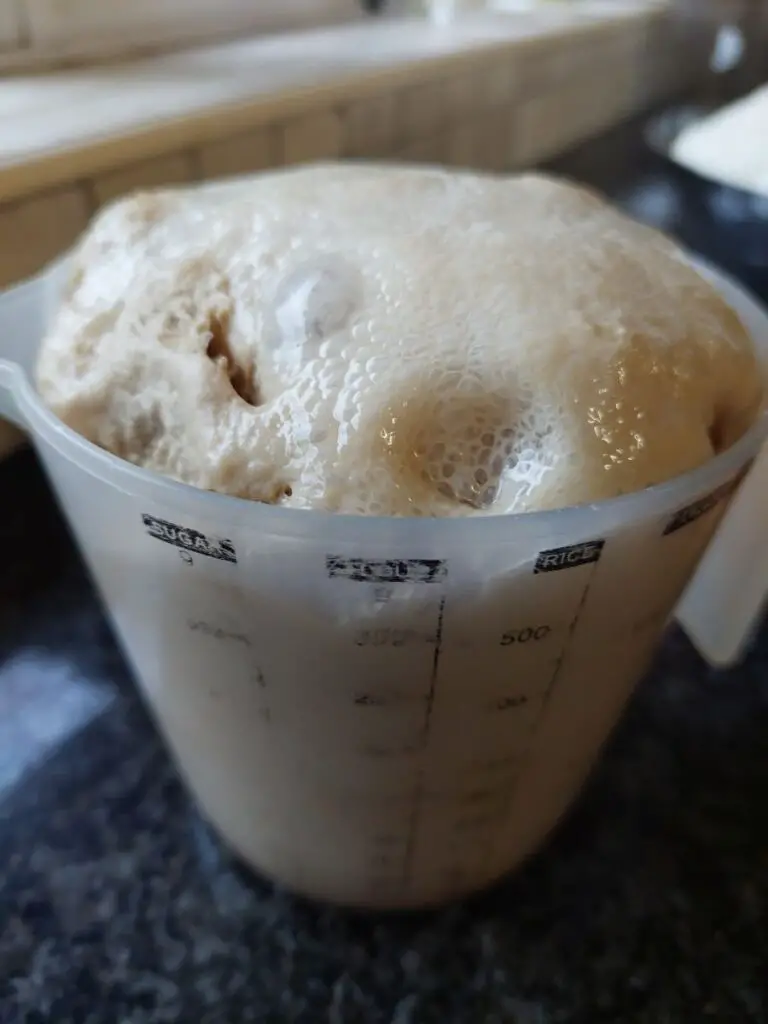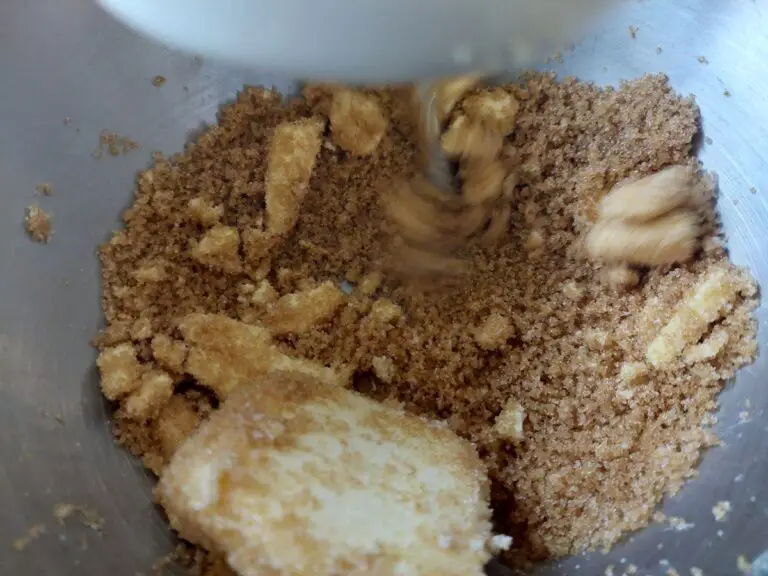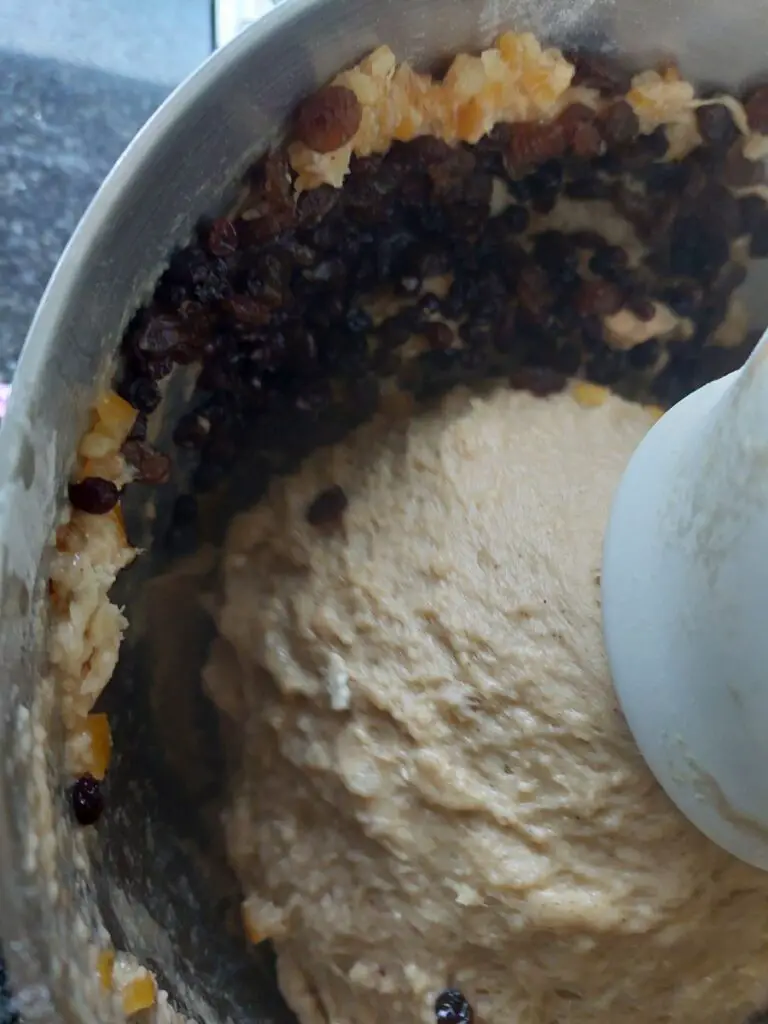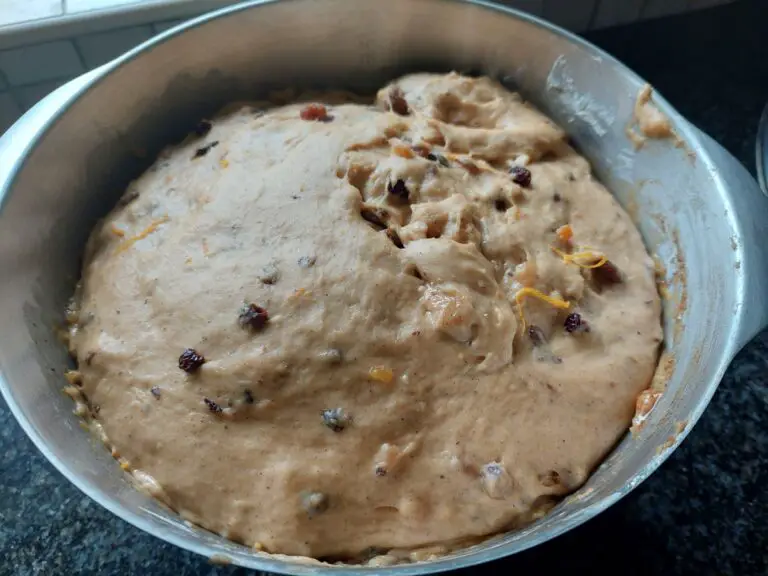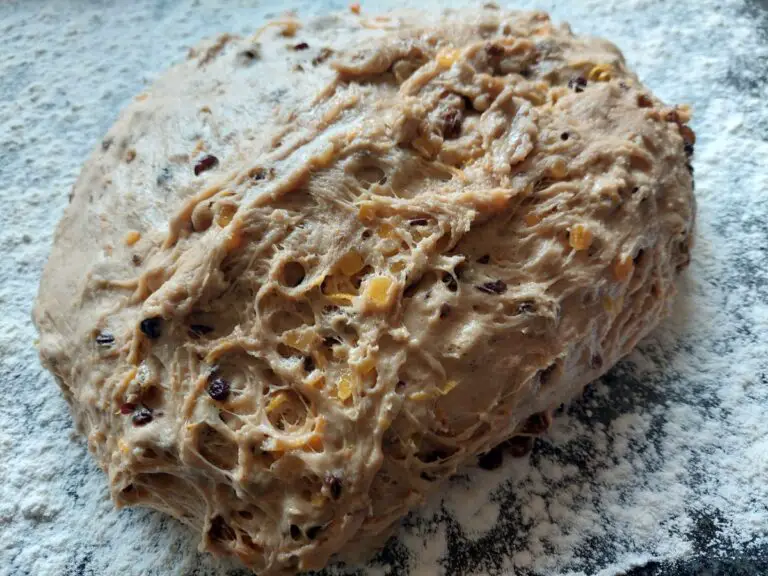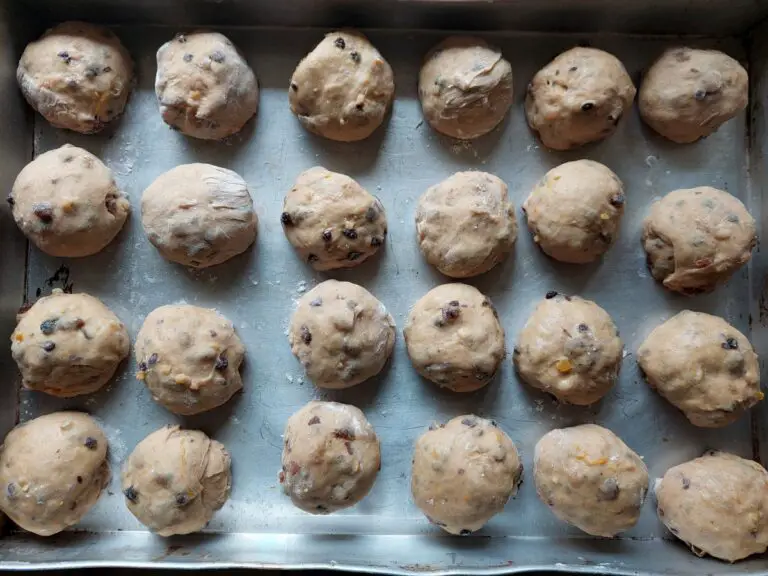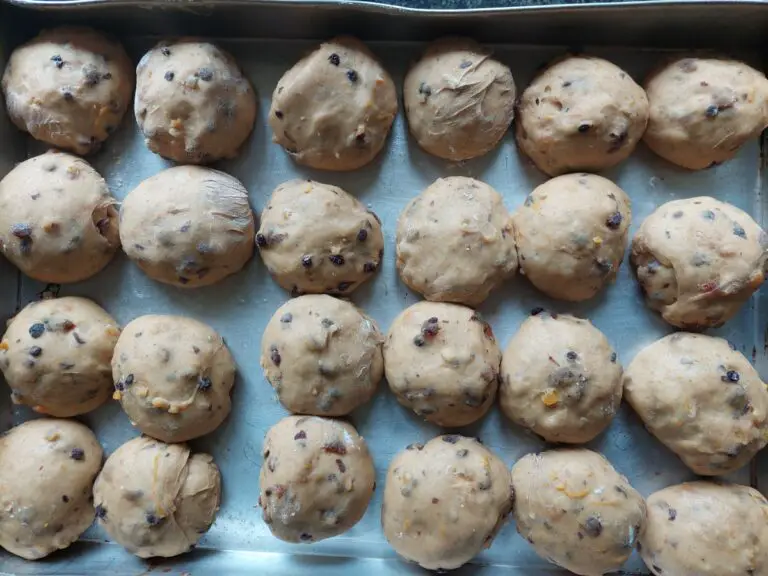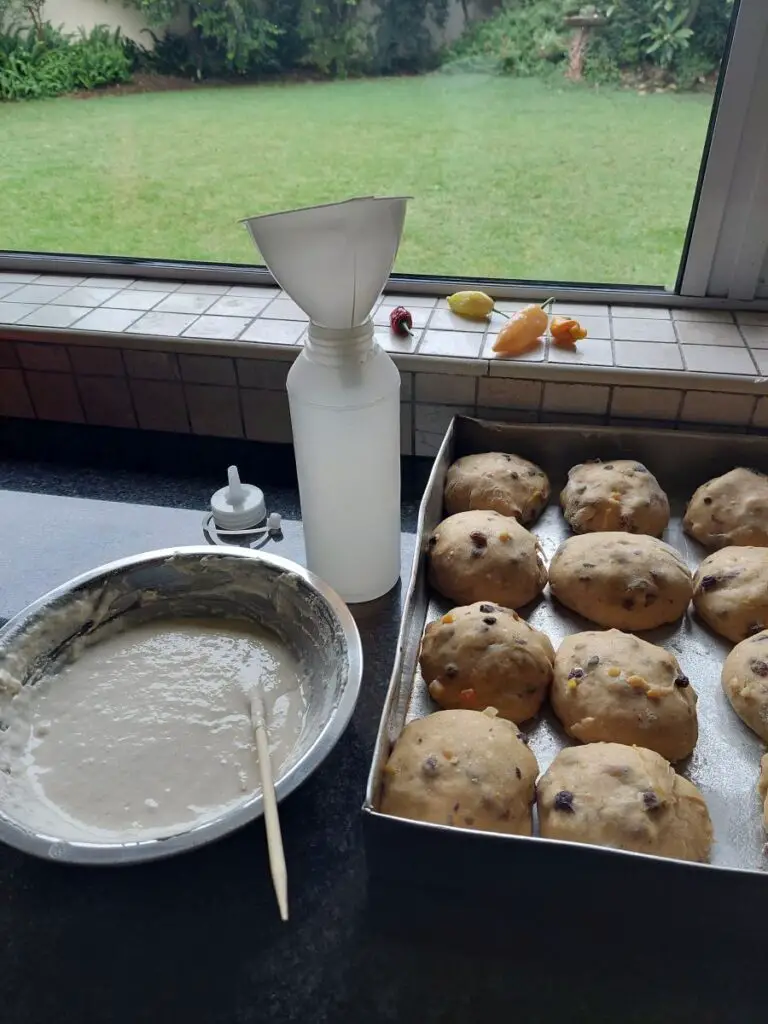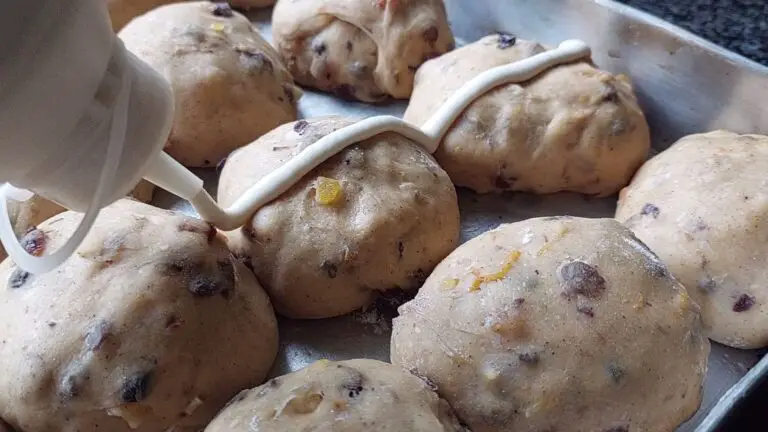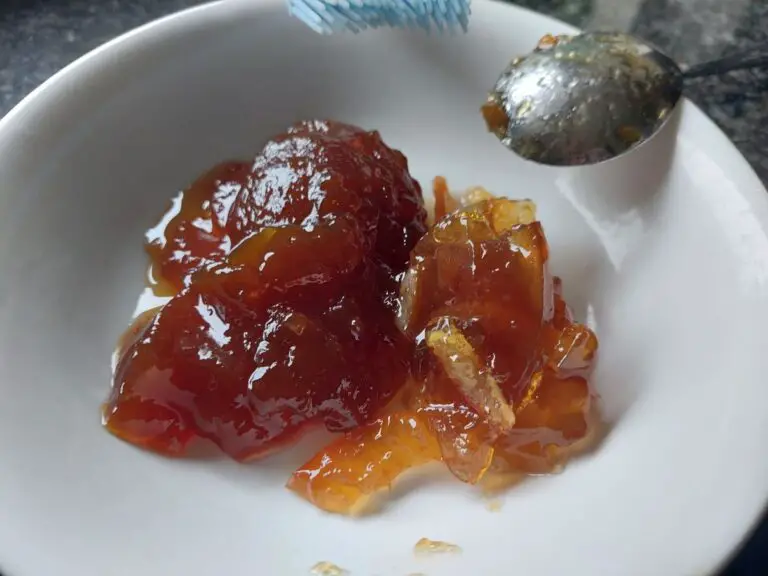Easter is back! Easter Egg hunts, chocolate bunnies, and spicy hot cross buns… the perfect way to escape winter and start your spring and summer seasons. Rewatching the old Great British Bake Off, with Mary Berry and Paul Hollywood, I was reminded of just how much I love these easter traditions and it made me brush off my good old “How to Bake” by Paul Hollywood.
Hot cross buns are sweet, spiced, and made with fruit, bearing a cross on top and traditionally glazed with apricot jam to give them gloss and stickiness. Traditionally, hot cross buns are made with cinnamon, sultanas, candied citrus peel, and orange zest while the pale cross on top is believed to symbolize the crucifixion of Christ. In recent years, bakers have begun to experiment with flavor profiles, creating variations such as chocolate chip, caramel, and even savory options. For those looking to put a unique twist on the classic treat, a cinnaboninspired hot cross buns recipe merges the traditional spices with creamy frosting, resulting in a delightful fusion that appeals to both traditionalists and modern dessert lovers alike. Whether enjoyed fresh out of the oven or toasted with butter, these buns continue to hold a special place in culinary traditions around Easter and beyond.
Basic Hot Cross Bun process:
Note: for tips and tricks to make your hot cross buns even better and fluffier, use this guide.
- Make the bun dough.
- Knead the dough for 10 minutes.
- Cover the dough and let it rise for about 1 hour.
- Make a log
- Portion out
- Shape into rolls.
- Let the rolls rise for about 1 hour.
- Pipe the crosses on top.
- Bake for 20-25 minutes until golden brown.
- Top with an apricot-orange glaze.

What do these Hot Cross Buns taste like?
Hot Cross buns feel like dinner rolls and yet taste like cinnamon rolls. Soft, yet dense. Sweet yet bitter. Citrussy yet spiced. This particular variation adds the spiced notes of mulled wine to the buns from nutmeg, allspice and bitter orange for an extra reminder of festivities. Adding in currants increases the fruit content of the buns, making them ever so richer and filling.
Why do we love these hot cross buns?
- Bitter orange glaze
- Currants
- Treacle sugar
- Candied orange peel
- Cinnamon, nutmeg, allspice
What makes Paul Hollywood’s hot cross buns different?
- Diced dessert apple: Paul Hollywood’s original recipe calls for a diced dessert apple, which I did not have. While Paul Hollywood prefaces his recipe by suggesting that the apple imbues extra moistness to the buns.
- 3 rises of the dough: This allows the basic dough to rise without the fruits, which are added just before the 2nd rise.
- Hotter oven: – A hotter oven will cook the hot cross buns a bit faster and tends to yield a thinner crust when used for 20 minutes, making the buns absolutely perfect.
How do these hot cross buns differ from the original recipe?
- Treacle sugar: – The original recipe uses caster sugar while I prefer treacle sugar as it adds a depth of flavor more akin to molasses, which simply cannot be matched by caster sugar.
- Nutmeg: – Nutmeg adds natural sweetness and when used freshly ground, has such a distinct flavor profile that they add an undertone of warmth and good cheer.
- Allspice: – This spice adds a hint of other flavors reminding people of spices such as cloves, licorice, bay leaves, and star anise. It is just a hint, and yet adds a depth to the taste while the eucalyptus-like oils in allspice give the hot cross buns a deeper, more penetrating taste.
- Currants: – Sultanas are great, but they tend to be quite large. Adding a similar amount of currants provides a delicious twist to the standard flavor profile of hot cross buns. Also, if you rehydrate them in an orange-flavored liqueur such as Grand Marnier or Cointreau, you can add a quick burst of flavor.
- Orange candied peel: – If you can get these, add them as well. They enhance the overall orange flavor and modify the body of the hot cross buns. Too often folks split the buns in two and eat each half individually, which means that the orange zing from the glaze can be missed unless candied orange peel can be sourced.
- Orange marmalade: – I find most hot cross buns too sticky-sweet. Using a bitter jam such as an orange along with the traditional apricot jam allows the sweetness to be mellowed out while adding an unexpected dimension to the buns.
- Low-fat Milk: – This is a small step toward being healthier. Actually, I tend to have low-fat milk in the fridge and I do not find that it makes a huge difference. If I need the extra fat, I simply add a bit more butter to the dish,.
- Salted butter: – I do not find that using unsalted butter makes a great difference. We normally have salted butter in the fridge and I simply reduce the amount of salt in the recipe by the amount of salt in the butter that I use. This makes my shopping a lot easier and prevents me from having too many half-used tubs in the fridge.
- 2 rises and not 3. Paul Hollywood uses 3 rising steps. I find that this takes too long for not too much benefit. If I kneaded the dough by hand, I would definitely consider 3 rises to make the mixing of the fruits easier, but with a stand mixer, it is easy enough.
- Stand mixer: – I am sure that Paul Hollywood would have a sharp word or two to say about this one. Yes, kneading by hand is so much better, but these days, I am pressed for time and it is just faster to use a stand mixer.
No-knead hot cross buns versus kneading by hand or using a stand mixer?
The recipe below will work equally well with all 3 approaches. The final product will differ subtly but only a true expert would know the real difference and in any case, these are so much better than the store-bought versions that no one will really care if you cut a corner or two…
- Stand mixer: – This is probably the fastest and easiest approach, perfect if you are trying to multitask. I find that it takes me just as long to clean the stand mixer as it does to clean my work surface if I knead by hand, so the convenience is worth it.
- Be careful though not to make too great a batch of hot cross buns at once as the stand mixer bowl may be too small for all the ingredients and the gear mechanism may not be up to the task, especially if making a stiffer dough.
- Kneading by hand: – This is my preferred approach and perhaps the purist’s approach. I like the feel of the dough as it moves from a loose collection of ingredients to a very wet consistency and then starts to mesh together into the final product.
- This approach is a great stress reliever as it enables you to focus on the task at hand and to recenter yourself.
- Great for building up hand and arm muscles while reinforcing your core muscles. Most people dislike kneading because their countertop is simply at the wrong height, giving them backaches. Using a correctly positioned countertop is a breeze.
- No-knead version: – The easiest approach which just requires a couple of minutes of stirring with a spatula.
- The end product may look a bit odd as no structure was built into the dough as you were preparing it, but this can be compensated for by more care in rolling the buns and stacking them a bit closer together in the tray so that they are self-supporting.
- The buns will be slightly less fluffy as well, barely noticeable unless you place them side by side. They will still be far better than the store-bought stuff.
- They will not keep as well. This is an odd side-effect, but a consequence of not building up the gluten in the dough. No matter, just make slightly fewer at a time and enjoy them fresh… The house will smell even more cheerful when you make a new batch.

